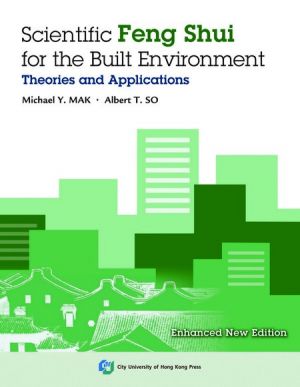Research in Scientific Feng Shui and the Built Environment
Feng Shui, the ancient Chinese wisdom, is now quite well-received around the world. However, there is a lot of misunderstanding and confusion about Feng Shui. If you search the keywords Feng Shuithrough the internet, you will found tens of thousands of we
To bring the study of Feng Shui beyond the shadow of superstition, it is essential to use scientific approach in studying Feng Shui. Scientific Feng Shui has two meanings, namely the verification of Feng Shui principles scientifically or studying Feng Shui logically in a scientific way. The first international symposium on scientific Feng Shui and built environment was held in the City University of Hong Kong in October 2005. Subsequently, the second and third international conferences were successfully completed in 2006 and 2007 in Hong Kong as well. These conferences were well attended by speakers and participants from five continents, including Asia, Europe, Australasia, North and South America. The aims of the conference are to provide an international platform to exchange scientific researches in Feng Shui and the built environment. In order to extend to the worldwide research communities in Feng Shui and the built environment, thirteen high-quality papers are selected from the past three years conference proceedings are compiled in this book. These papers are categorized into four parts: research in Compass school, research in Form school, research in cities and villages design, and future of research in Feng Shui and the built environment. We wish this book can provide a platform for advancement of research in scientific Feng Shui and the built environment, and eventually Feng Shui knowledge may serve as the foundation for a new field of science in the built environment.
Introduction—Scientific Research in Feng Shui
—Michael Y MAK and Albert T SO
Part I. Research in Compass School
1. The Role of the Twenty-eight Xiu in Feng Shui
—Derek WALTERS
2. Observations Linking Megalithic Monuments to the Chinese Luopan
—Derek WALTERS
3. An Assessment into the Basics of Eight Mansions Feng Shui Theory
—Fook Tsan WONG
Part II. Research in Form School
4. Feng Shui and the Energy of the Land
—Michael PATON
5. Tracing Rational Aspects of Feng Shui (Geomancy)
—Hong-Key YOON
6. The Core Principles of Feng Shui
—Howard CHOY
7. A Conceptual Framework of Feng Shui Knowledge Structure
—Michael Y MAK
Part III. Research in Feng Shui and the Built Environment
8. Feng Shui Design and Planning of Ming and Qing City of Beijing
—Michael CHIANG
9. Tracing Feng Shui in Ancient Japanese Capitals—
Case Study: Nagaoka, Japan’s Forgotten Capital
—Ellen VAN GOETHEM
10. A Study on Feng Shui Village Landscape Structure in the Ryukyu Islands
—Bixia CHEN, Yuei NAKAMA And Genji KURIMA
Part IV. Future of Research in Feng Shui and the Built Environment
11. Feng Shui and Contextualism in Western Architecture
—Gyda ANDERS
12. The Comparison and Contrast between Green Design and Feng Shui
—Wei DONG And Rachel ZUEHLI
13. Sustainable Feng Shui Eco-house
—Kok Hoo LOO
Epilogue—Problems and Future of Research in Feng Shui
—Albert T SO and Michael Y MAK


